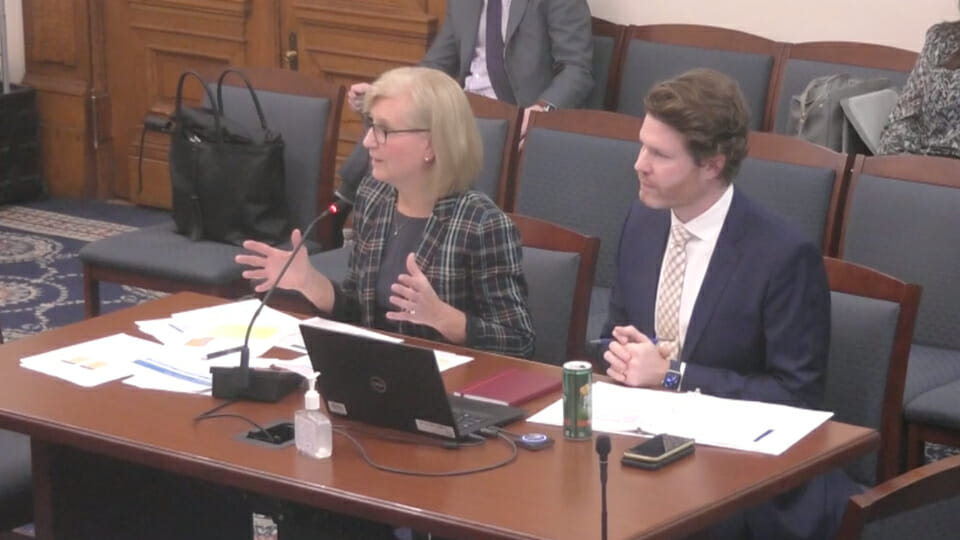Legislators skeptical as agencies outline their needs
Subscriber Benefit
As a subscriber you can listen to articles at work, in the car, or while you work out. Subscribe Now
The Department of Child Services needs to increase rates for foster families and pay stipends for children in kinship care. More money is needed to develop a proposed 12,000 acre technology park in Boone County.
These requests for funding continued to filter in this week as the state begins drafting its two-year budget plan. Agencies presented their needs before the State Budget Committee but the allocation of dollars will heavily depend on a revenue forecast due to be released on Thursday.
But key budget writers seem openly skeptical of spending requests, even those that get the nod of approval from Gov. Eric Holcomb. Previously, Republican leaders questioned the requested increase for public health spending, even as Indiana’s per capita spending lags behind most of the nation.
A tough year for additional needs
Every agency will have increases incorporated into their budget presentations following a compensation study commissioned by Holcomb, who argues that the state’s problem with employee turnover is closely tied to its low salaries. Existing funds covered this fiscal year’s increases, implemented following the study’s October release, but continued funding is needed – to the tune of $160 million from the General Fund.
But many agencies have other projects in need of funding on top of salary increases.
Education funding for K-12 schools already is just over half of the state’s $17 billion budget. On top of that, the Department of Education outlined its requests.
Katie Jenner, the state’s secretary of education, said the governor’s proposed budget would include an increase to the state’s tuition support formula following the release of the December forecast on Thursday.
Jenner outlined programs to cover costs for students who fell a few courses short of completing a degree as well as efforts to train teachers for special education and English learning classes. In particular, she said, the state needed to invest in literacy, which fell during the pandemic, at least enough to meet an additional $10 million matching grant with Eli Lilly.
“We are presently sitting at a place as a state where one in five children are not reading by the end of third grade. I hate sharing that data point with you; our schools don’t love that data point either,” Jenner said. “We’re going to do everything we can to make sure that all of our children can read.”
Sen. Ryan Mishler, R-Bremen, said last week he was skeptical of additional spending when inflation had already hurt the previous cycle’s budget, inflating construction costs on capital improvement projects.
Some areas where the legislature had embraced increased spending hadn’t met the state’s needs, he said.
“We invest more and more money in K-12 but all we read about is how the kids are performing worse,” Mishler said.
Longstanding programming with bigger needs
Dan Rusyniak, the secretary of the Family and Social Services Administration (FSSA), highlighted the unprecedented need for FSSA programs during the COVID-19 pandemic, urging investment to rebuild the agency’s systems rather than administer a quick fix.
“When systems are put under stress, particularly when they’re put under severe stress, you tend to see where the cracks are,” Rusyniak said. “The last couple of years have put our systems … under tremendous stress and as such have really shown us where we have system-related challenges.”
FSSA gets the bulk of its funding from federal sources and oversees the second-largest portion of the budget: Medicaid spending. Additionally, the agency regulates long-term care along with childcare facilities – both areas in need of reform following the pandemic.
The vast majority of Hoosiers want to age at home but Indiana’s system relies too heavily on nursing homes, meaning FSSA will need to invest and incentivize more home- and community-based services.
“We don’t have the workforce for home- and community-based services in the managed care that you’re looking for,” Sen. Liz Brown, R-Fort Wayne said. “I can’t say that I’ve seen a good solution to that.”
The shortage of childcare systems – especially quality centers that are affordable – is so dire that the state’s chamber of commerce included the expansion of the childcare system on its list of 2023 legislative priorities.
The Department of Workforce Development requested increases for specific programs designed to complement federal funds for various Hoosier populations, including adult learners.
Roughly 430,000 working-age Hoosiers do not have the equivalent of a high school education, Deanna Oware, the department’s chief financial officer, told the budget committee. The program now educates 20,000 Hoosiers annually.
In the first year, the agency requests a $3 million increase for adult basic education followed by another $3 million the following year, for a total of nearly $19 million in the 2025 fiscal year.
“Increased funding will allow us to expand to 2,500 new students in (2024) and 5,000 new students in (2025),” Oware said. “The general fund dollars plus the federal fund dollars … is about $12-13 per student.”
Legislators convene again on Thursday to review the budget and revenue forecasts for the next two years, which will determine whether the General Assembly can meet any of the agency asks from the last two weeks.
